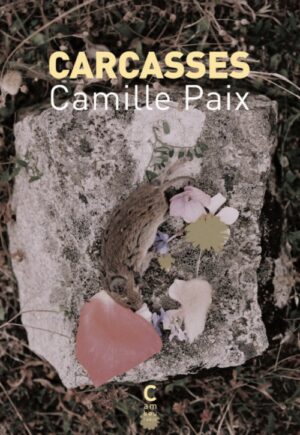
In an organic language that both rasps and lulls, Camille Paix scatters her poems as one would lay out puzzle pieces before themselves. As we journey with her, we discover patterns that repeat beneath the stones: damaged bodies, wounded animals, pearl crowns. How can we make exist what has disappeared, what we can no longer see, touch, or photograph? By throwing open the closets of memory, those of her family but also of others, Camille Paix lets in the ghosts and allows her anger to seep through. Then, surrounding herself with the dear departed women, from Maria Borrély to Joyce Mansour, she stitches back together, poem by poem, the body she first set out to dissect. The poetess thus gives voice to buried emotions and speaks to our senses—evoking in turn the smell of wet wood and the taste of skin—to enter literature with a first collection of great sensitivity.
